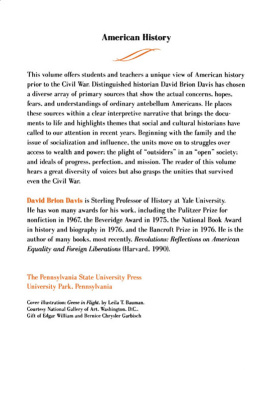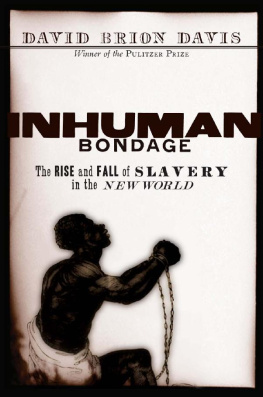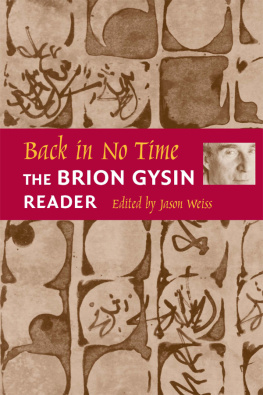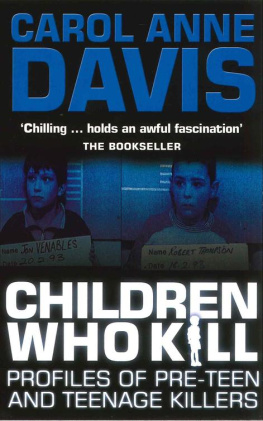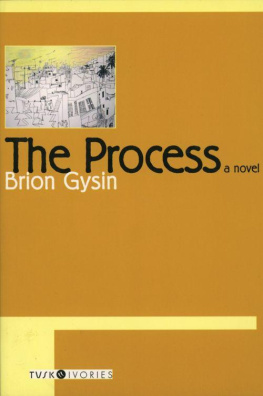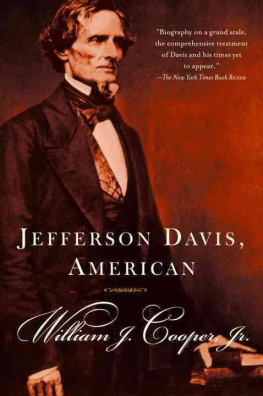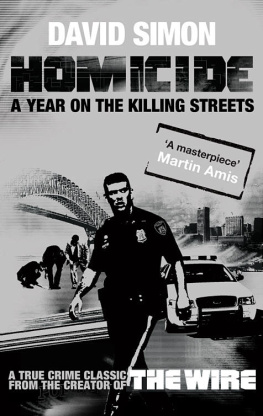David Brion Davis - Homicide in American Fiction, 1798-1860: A Study in Social Values
Here you can read online David Brion Davis - Homicide in American Fiction, 1798-1860: A Study in Social Values full text of the book (entire story) in english for free. Download pdf and epub, get meaning, cover and reviews about this ebook. year: 1957, publisher: Cornell University Press, genre: Science. Description of the work, (preface) as well as reviews are available. Best literature library LitArk.com created for fans of good reading and offers a wide selection of genres:
Romance novel
Science fiction
Adventure
Detective
Science
History
Home and family
Prose
Art
Politics
Computer
Non-fiction
Religion
Business
Children
Humor
Choose a favorite category and find really read worthwhile books. Enjoy immersion in the world of imagination, feel the emotions of the characters or learn something new for yourself, make an fascinating discovery.

- Book:Homicide in American Fiction, 1798-1860: A Study in Social Values
- Author:
- Publisher:Cornell University Press
- Genre:
- Year:1957
- Rating:5 / 5
- Favourites:Add to favourites
- Your mark:
- 100
- 1
- 2
- 3
- 4
- 5
Homicide in American Fiction, 1798-1860: A Study in Social Values: summary, description and annotation
We offer to read an annotation, description, summary or preface (depends on what the author of the book "Homicide in American Fiction, 1798-1860: A Study in Social Values" wrote himself). If you haven't found the necessary information about the book — write in the comments, we will try to find it.
Homicide in American Fiction, 1798-1860: A Study in Social Values — read online for free the complete book (whole text) full work
Below is the text of the book, divided by pages. System saving the place of the last page read, allows you to conveniently read the book "Homicide in American Fiction, 1798-1860: A Study in Social Values" online for free, without having to search again every time where you left off. Put a bookmark, and you can go to the page where you finished reading at any time.
Font size:
Interval:
Bookmark:
Homicide in American Fiction, 1798-1860:
A STUDY IN SOCIAL VALUES
By David Brion Davis
CORNELL UNIVERSITY
Cornell University Press
ITHACA, NEW YORK
To Howard Mumford Jones
HUMAN aggression is a subject which haunts the minds of modern Americans. Psychological studies continue to probe at the shadowy connections among such diverse forms of violence as juvenile delinquency, racial hatred, murder, and war; social scientists urge that children be adjusted to a group because adequate recognition and a sense of belonging are supposed to negate aggressive impulses; yet a virtual celebration of violence pervades the cheaper novels, magazines, and television. Indeed, to be aggressive in ones vocation is to conform to an accepted criterion for success, although aggression on the part of a foreign nation or group is condemned with righteous horror. In general, Americans of the mid-twentieth century seem to think of themselves as a highly aggressive people who never commit acts of aggression, in spite of their imaginative interest in bloodshed.
On the other hand, if we could formulate a generalized image of America in the eyes of foreign peoples from the eighteenth century to the present, it would surely include, among other things, a phantasmagoria of violence, from the original Revolution and Indian wars to the sordid history of lynching; from the casual killings of the cowboy and bandit to the machine-gun murders of racketeers. If America has often been considered a country of innocence and promise in contrast to a corrupt and immoral Europe, this sparkling, smiling, domestic land of easygoing friendliness, where it is estimated that a new murder occurs every forty-five minutes, has also glorified personal whim and impulse and has ranked hardened killers with the greatest of folk heroes. Founded and preserved by acts of aggression, characterized by a continuing tradition of self-righteous violence against suspected subversion and by a vigorous sense of personal freedom, usually involving the widespread possession of firearms, the United States has evidenced a unique tolerance of homicide.
This study began with the assumption that attitudes toward intentional homicide in American literature would reveal certain beliefs and values which, in turn, would elucidate more general problems in American civilization. Since it has been an experimental study, in both objectives and methodology, it is necessary first to define its scope, purpose, and major themes. A social or legal historian might have treated the subject of homicide in America within a framework of institutional change, describing regional, social, and temporal variations in court records, newspaper accounts, and pamphlet literature. A literary historian might have confined his study to the influence of European writers on the treatment of crime in American fiction. Although this inquiry is neither institutional nor literary (in the strictest sense of the word), a lack of related investigation has made necessary occasional excursions into such associated fields.
Essentially this is a historical analysis of certain ideas associated with homicide, including beliefs concerning the origin and development of human evil, the extent of freedom and responsibility, the nature of mental and emotional abnormality, the influence of American social forces on violence, and the morality of capital punishment. It is obvious that such subjects provide material for eight or ten books. But if a wide scope precludes complete discussion of any single topic, there may be an advantage in seeing one fundamental problem in its various social and intellectual manifestations. Homicide, despite its many changing social and legal implications, is a universal problem, the culmination of all human aggression, and an everpresent means for the resolution of conflict. During the course of our inquiry, we shall examine diverse theories and distant relationships, but the unifying core will be the knowledge that man possesses, by virtue of his intelligence, an extraordinary capacity to kill. Whether judges justify lynching or reformers condemn hanging or writers of fiction uphold the unwritten law of a husbands revenge, there is an underlying question of how to limit mans supreme power to destroy.
We are primarily concerned, then, with analyzing American beliefs, values, and associations concerning homicide. For this purpose, the period from the late 1790s to 1860 seems to be especially promising. By the late 1790s most Americans were confident that the democratic experiment would be successful, that order could be maintained (even without the Alien and Sedition Acts), and that the new nations future was to be one of moral progress and of individual happiness, free from the corrupting influences of European institutions. Yet territorial and economic expansion in the following decades, weak political and judicial power in frontier communities, increasing sectional conflicts, the presence of differing racial, religious, and ethnic groups, the extension of popular democracy, and the rapid growth of cities and of industrial patterns of lifeall these contributed to a high incidence of violence, especially from 1830 to the Civil War. The period from the late eighteenth century to 1860 also saw the spread of new conceptions of insanity and of moral responsibility, the rise of the movement to abolish capital punishment, a persistent tolerance of dueling and lynching in the South, and changes in the legal definition of murder. Finally, the dominant issue in American life after 1850 was whether democratic institutions were capable of diminishing a profound internal conflict or whether an ultimate appeal to force was an inherent part of a society founded on the laws of nature.
Our time span may be roughly divided at 1830, and by the nature of American social and literary development, the primary emphasis must fall on the second thirty years. Chapters largely confined to the history and change of ideas are more chronological than are those which analyze themes and concepts in literature.
To appreciate the significance of homicide in American fiction, we must follow the development of related ideas in other areas, such as moral philosophy, theology, early psychiatry, and jurisprudence. Sometimes this intellectual context reaches backward or forward into time, necessitating discussions of men and ideas which are not within our period. Such material is intended to furnish a background which puts the principal themes in clearer perspective. We may assume that Americans of 1800 inherited a set of traditional values concerning homicide, largely embodied in religion and law. These dominant values, such as the biblical doctrine of blood for blood, were challenged during the next two generations by the beliefs and theories of special groups, including reformers, defenders of lynching, Abolitionists, phrenologists, and professional alienists. Inasmuch as works of fiction often tested accepted ideas (moral freedom, for example), mediating between contemporary theories and traditional valuations, it is necessary to discuss examples of the dominant tradition, as well as those of newer philosophies. In order to analyze beliefs concerning evil and responsibility, we must first present the views of orthodox Protestantism, John Locke, and eighteenth-century moral philosophers.
A complex system of selection and organization is unavoidable in a study of this kind. The first two parts are concerned with theories of human nature and mental abnormality as they pertain to homicide. Since ideas from early moral philosophy and psychiatry are applied throughout the study, the chapters introducing each of these parts should be thought of as a framework for the entire book. In Parts One and Two there are separate chapters containing material on human nature and insanity, followed by chapters which analyze related subjects in American fiction. In Parts Three and Four, however, the background material, presented in less detail, is included within each chapter, its extent and position being determined by the character of the particular subject. It is necessary, for instance, to discuss the facts of an actual murder in connection with an analysis of its fictional treatment. On the other hand, a brief survey of lynching and dueling in America may precede a general examination of the same subjects in fiction. Since ideas concerning evil, abnormality, and punishment were closely associated with fictional homicide, a greater proportion of space must be devoted to the intellectual background of these problems.
Next pageFont size:
Interval:
Bookmark:
Similar books «Homicide in American Fiction, 1798-1860: A Study in Social Values»
Look at similar books to Homicide in American Fiction, 1798-1860: A Study in Social Values. We have selected literature similar in name and meaning in the hope of providing readers with more options to find new, interesting, not yet read works.
Discussion, reviews of the book Homicide in American Fiction, 1798-1860: A Study in Social Values and just readers' own opinions. Leave your comments, write what you think about the work, its meaning or the main characters. Specify what exactly you liked and what you didn't like, and why you think so.


